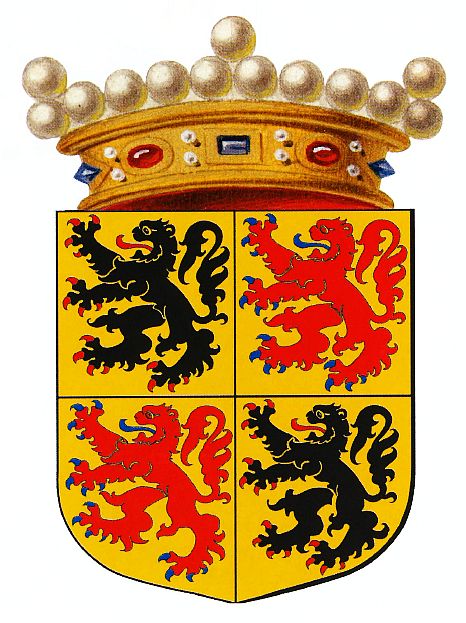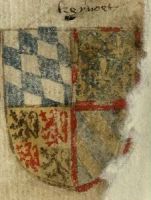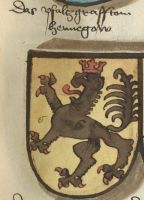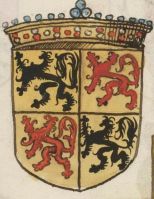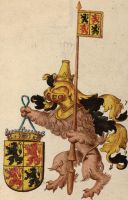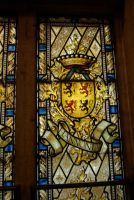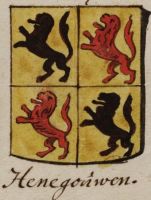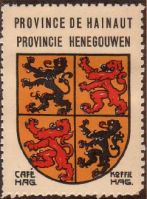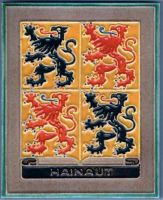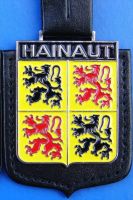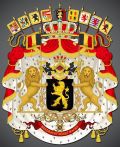Hainaut
HAINAUT
Official blazon
Ecartelé, aux 1 et 4 d'or au lion de sable, armé et lampassé de gueules; aux 2 et 3 d'or au lion de gueules, armé et lampassé d'azur; couronne comtale à treize perles dont trois relevées
Origin/meaning
The arms are a combination of the arms of the counties Vlaanderen and Holland.
Hainaut is a county in the southern part of the country and was first mentioned in the 11th century. The oldest arms of the county show 3 chevrons sable on a shield or. These arms are known since Baldwin V (1171-1195). In the 12th-13th centuries the succession in Hainaut was very complicated. In 1279 Jan I of Vlaanderen inherited Hainaut. He did not use the old arms, but the arms of Vlaanderen instead. His son William I of Hainaut (II of Vlaanderen and Holland) used arms quartered of Vlaanderen and Holland. He did not use separate arms for Hainaut. The quartered arms have been in use ever since.
Image gallery
The arms in a 17th century manuscript
The arms in the Wapen- en Vlaggenboek van Gerrit Hesman (1708)
The arms in the Koffie Hag/Café Hag albums +/- 1930
The arms on a police badge (source)
Literature: Vries, H. de: Wapens van de Nederlanden, Amsterdam, 1995.
Belgium heraldry portal
This page is part of the Belgium heraldry portal |
Heraldry of the World |
|
Civic heraldry:
|
Other heraldry: |
Contact and Support
Partners:
Your logo here ?
Contact us
© 1995-2025, Heraldry of the World, Ralf Hartemink 
Index of the site
